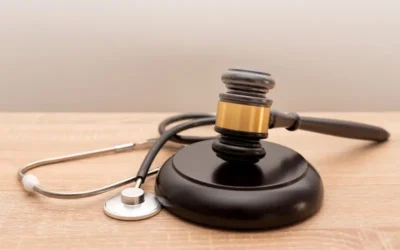The medical record being a legal document is very important when it comes to personal injury, medical malpractice, product liability and insurance litigation. The medical records needed for such cases are collected and streamlined by a medical record retrieval company. A medical record must be comprehensive enough to prove medical necessity. It must correctly identify the patient and accurately document insurance information. Proper technical, administrative, and physical safeguards must be in place to protect the privacy of the patient. A clear understanding of the types of medical records and what is legally required in them is important for healthcare providers.
Medical record: It is a complete record of the clinical aspects of patient care and may be in paper or electronic form.
Designated record set: According to 45 CFR § 164.501, a designated record set constitutes a group of records maintained by or for a covered entity.
- Medical records and billing records about individuals maintained by or for a covered healthcare provider.
- The enrolment, payment, claims adjudication, and case or medical management record systems maintained by or for a health plan, or
- Used, in whole or in part, by or for the covered entity to make decisions about individuals
EMR or electronic medical record: A digital version of the traditional paper medical chart that contains a patient’s total medical history from one practice. EMRs are the records used by physicians in their own offices and these contain medical information about the patient related to that particular office. Data contained in an EMR includes medical history, physical exams, notes by providers and consults from other physicians. Other information includes medications and allergies including immunization history, and alerts to patients and the office for preventive tests/procedures. EMRs are confidential and are not usually shared outside of the medical office where they were created unless the patient specifically makes a request.
EHR or electronic health record: It is a more comprehensive or all-inclusive report of a patient’s overall health. The federal government requires all health records to be transferred over to EHRs with a view to reduce errors and patient harm, reduce costs, and improve the decision-making process while also making it easier for healthcare providers and quality control personnel to access patient information.
The legal medical record: This record includes both clinical medical records and a designated record set. It is significant because it is the most comprehensive record and is the healthcare organization’s complete business record across the care continuum. The legal medical record also includes text messages and emails to patients.
What information must medical records necessarily contain?
- Patient’s identifying information: These include name, date of birth, Social Security number, address, contact information, emergency contact information, date of birth, insurance information, HIPAA authorization, and advance directives if any. A medical directive or living will is kept on file and tells the treatment team the wishes of the patient in case the patient is unable to speak for himself/herself regarding their medical care. Most records will also have facility-specific identification also.
- SOAP notes and adequate clinical documentation to substantiate medical necessity. SOAP notes comprise:
- Subjective: Details regarding the patient’s current condition, chief complaint for which medical treatment is sought
- Objective: These details are objective, repeatable, and traceable information about the patient’s status, and will include vital signs, lab test results and other findings from the physical exam
- Assessment: Medical diagnosis for the medical visit and the date the note was written
- Plan: This includes the plan of treatment, next steps to take and follow up.
Importantly, any information included in the medical record should meet medical treatment protocols that are based on professional standards of care and scientific evidence. Doctors, lawyers, medical chart review professionals and other entities handling medical records should be also fully conscious about the sensitive personal information these documents contain. Ensuring a patient’s privacy and confidentiality is important because apart from being an HIPAA issue, it is also a constitutional issue. As regards the patient community, patients must understand that all documents pertaining to their care including intake forms are extremely valuable pieces of information whether it is for record keeping, identification, or medical care. Medical records may have to be shared to ensure proper care coordination across the healthcare spectrum. This is facilitated by technological advancements, which also allow updating the records whenever needed.




